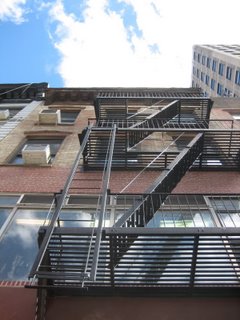
Yesterday I traveled to New York city to visit the Dream House, the sound and light exhibit created by LaMonte Young and Marian Zazeela. I've wanted to go for years but never made it for one reason or another. The house is on a busy street in the Tribeca neighborhood. Young and Zazeela live in the same building, one floor above the installation.
I'm still in the early stages of learning about the work of LaMonte Young. I'd heard that John Cale had collaborated with him in the early 60's and I knew that Spacemen 3 were devotees but that was about it until fairly recently when I began to take a closer look at the New York avante-garde music scene of the early 60's.
Anyway, back to yesterday. I climbed up the stairs to the third floor where I removed my shoes and entered the apartment. Once inside, I walked down a hall to a large carpeted front room lit in magenta light with four speakers putting out a very loud range of drones. My first impression was that it sounded like a big engine. The really trippy aspect to this installation is that the sound changes depending on where you sit or stand. So if you move your head slowly, various ranges of drones will come in and out of hearing. It's hard to describe but fantastic to experience. When I left I was surprised to discover that I'd spent two hours in the room. I had no idea I'd been in there that long.
And just to give you an idea of the complexity of Young's work, here is the title of the piece that was playing in the dream house yesterday (which he's been working on for the past 15 years and has yet to complete):
The base 9:7:4 Symmetry in Prime Time When Centered Above and Below the Lowest Term Primes in the Range 288 to 224 with the Addition of 279 and 261 in Which the Half of the Symmetric Division Mapped Above and Including 288 Consists of the Powers of 2 Multiplied by the Primes Within the Ranges of 144 to 128, 72 to 64 and 36 to 32 Which Are Symmetrical to Those Primes in Lowest Terms in the Half of the Symmetric Division Mapped Below and Including 224 Within the Ranges 126 to 112, 63 to 56 and 31.5 to 28 with the Addition of 119.
Got that?
1 comment:
droooooooooohhhhhhhhnnnnnneee
Post a Comment